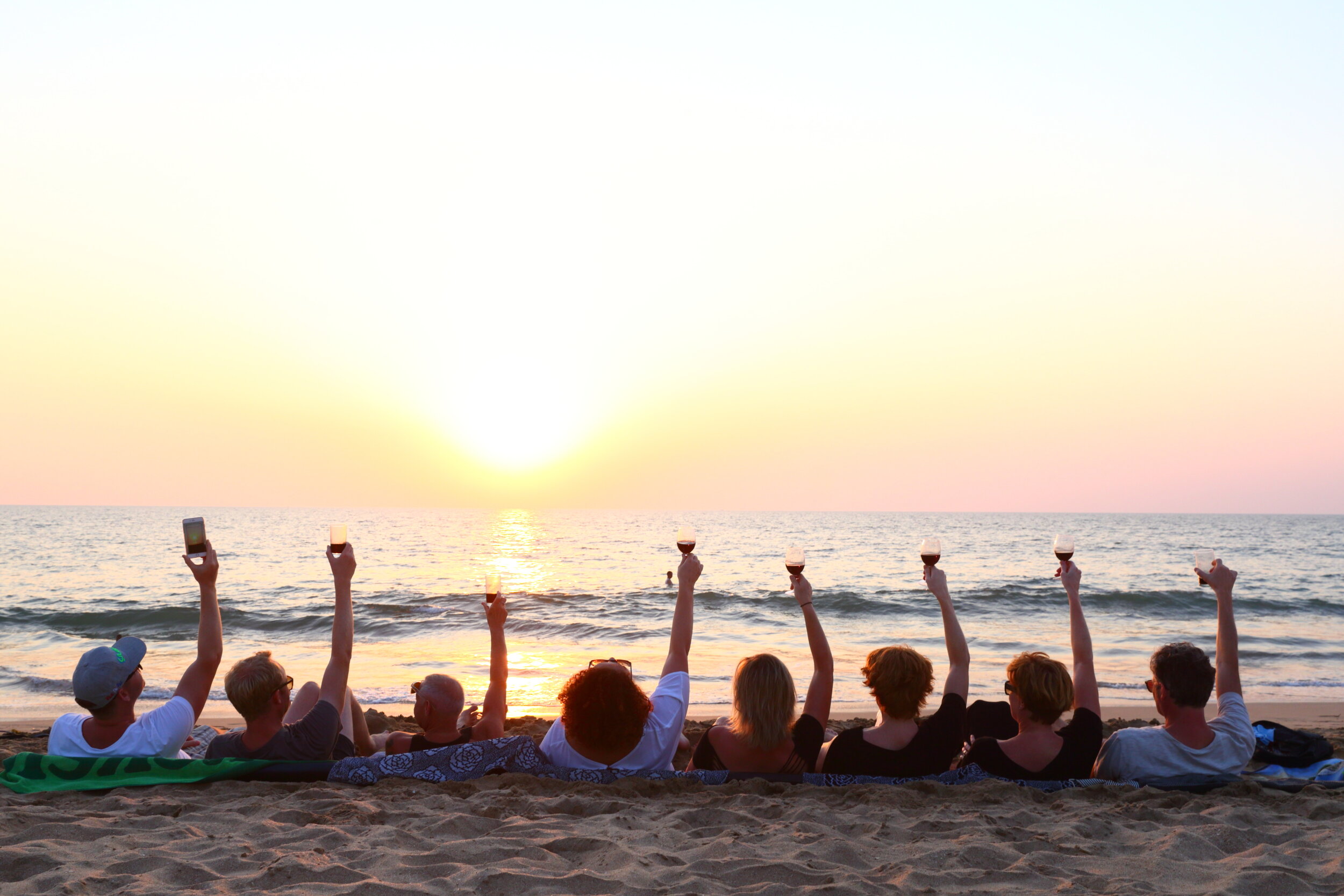Can This Be the Future?
With massive boosts in canned wine sales, more and more wineries are popping the tab on this growing market. Growth is booming, with The Wine Economist reporting a 69% increase for 2019. In fact, custom crush facilities that offer canning, like Bin to Bottle in Napa, are overrun with eager winemakers looking for a potential production line. But this new packaging isn’t just a fad. Vintners and industry leaders alike believe canned wine will be preserved as a part of the modern wine industry.
In an interview with Forbes back in August, WineSociety CEO and can convert Angela Allison believes “...it could definitely grow to be 30 percent of the category within five years…”
Not long ago, canned wine was a rarity in stores. As the once seasonal demand has shifted to year-round sales, grocers have been consistently stocking larger quantities. As demand and sales increase, the varietals and brand offerings are also expanding. The category began with primarily domestic, can-only brands, but has expanded to include imported offerings and wine from high-end, more established labels. With this increase in variety, consumers are able to enjoy wine less traditionally without sacrificing quality or pairing potential. Let’s take a closer look at the consumers, packaging process, and taste testing of the industry’s newest category.
Consumers
The growing audience of can consumers is primarily millennials, but the outdoor and sporting community and eco-friendly crowds are also avid advocates. In addition to the ease of portability enjoyed by outdoor enthusiasts, canning reduces the carbon footprint of winemaking production drastically. According to the EPA, around 80% of wine bottles end up in landfills, and an investigative article from Sestra in 2017 estimates that 85% of wine production’s carbon footprint comes from glass packaging. These statistics make buying cans a much more eco-friendly way to enjoy wine, and perhaps the latest way to reduce purchasing overly packaged goods.
Not only do cans solve the problem of transporting wine to glass-free areas like concert venues and beaches, but they also tackle the increasingly reported issue of wine spoilage. New wine drinkers and those limiting alcohol consumption have found that wine typically spoils before they can finish the whole bottle. Buying cans, which offer a smaller volume of wine, allows them to enjoy a glass when they like without the fear of wasting an entire bottle.
Process
All benefits of canning wine aside, how is it actually done? Below is a step-by-step look from Insider at the canning process of beer, which is very similar to the process for wine.
The main difference between the beer and wine canning process is the can itself. Since wine interacts with the aluminum cans, they must have a specially formulated lining to prevent the wine from corroding the can as it sits on the shelf. Wines interact with the lining differently, so each and every wine must undergo a corrosion test before it can be put into a canning line. White wines overall tend to be less corrosive to the lining, so many more white and Rosé options are available than red wines, which are trickier to can.
Liquid nitrogen is added in doses to ensure all air is pushed out of the cans before they are sealed, helping them to reach the correct internal pressure. Even with the preservation of the canning technique rendering the cans shelf-stable, they still have an expiration date. Shelf lives can vary by wine, anywhere from three to twelve months, but in general, reds will have the shortest shelf life due to their higher corrosion rate.
Taste
No matter how eco-friendly cans may be, the real test comes down to taste. The first blind taste test of canned wine versus its bottled counterpart was held at the 1st International Canned Wine Competition in Mendocino, California in July of 2019. This taste test included 86 random participants tasting the same wine bottled and canned, and reported the overall conclusion that (when poured into a glass) consumers could find no discernible difference between the wines. Out of all participants, 49.5% preferred the bottled, where 51.1% preferred the canned wines.
Two types of wines, in particular, were especially favored in cans: Riesling with 57% and Rosé with 68%. After researching and understanding the importance of fresh, fruit-forward wine for the canning application, these statistics continue to support white, Rosé, and sparkling wines as the darlings of the canned market.
But what about drinking the wine straight from the can, does this affect the flavor? With the convenience, there are some drawbacks in the form of a slight aluminum aftertaste, and an inability to smell the wine as you drink it. However, this allows the consumer to decide whether portability and ease outweigh the higher quality taste that glass provides on a can-by-can basis. A new wine drinker looking to try something new will likely choose to pour into a glass. For a backpacker looking to pack in some wine as a celebration at the end of a long trek, drinking straight from the can is an obvious choice.
The beauty of the packaging is that it allows the consumer to choose how they want to enjoy and experience wine. And, it allows the younger generations to have access to a drink many avoid simply due to intimidation. Are you ready for a can-inclusive future?








